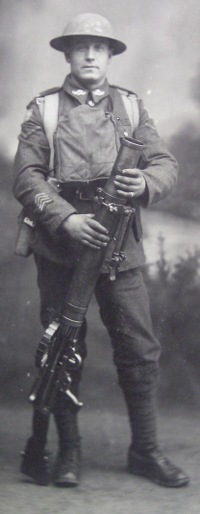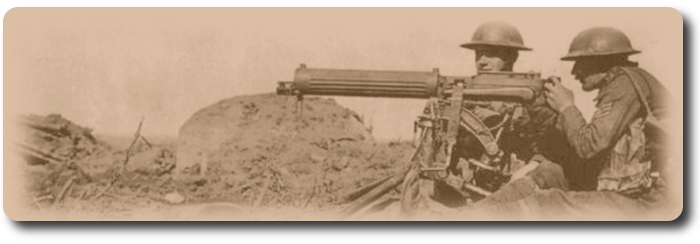Topic: Militaria

Weapons that are Winning the War
Maxim and Lewis Guns Not Rivals
The Independent, St Petersburg, Florida; 19 Dec 1917
 Washington, D.C., Dec. 19.—American army officers who have visited the front line tell of considerable rivalry and argument among American and British soldiers regarding the respective merits of the Lewis gun, invented by Isaac Lewis, of the Unites States Army, and the Vickers-Maxim, which the British claim as strictly their own invention, forgetting that Sir Hiram Maxim was born in Maine.
Washington, D.C., Dec. 19.—American army officers who have visited the front line tell of considerable rivalry and argument among American and British soldiers regarding the respective merits of the Lewis gun, invented by Isaac Lewis, of the Unites States Army, and the Vickers-Maxim, which the British claim as strictly their own invention, forgetting that Sir Hiram Maxim was born in Maine.
As a matter of fact, the ordnance experts do not consider the Lewis and maxim guns as rivals. Within the past year the use of both the Maxim and Lewis guns has undergone a great change. Each weapon is now working strictly within its limitations, and except by accident one does not attempt to do the work of the other.
The Lewis gun was not designed to be a machine-gun. The Machine-gun is now an artillery weapon, the Lewis gun an infantry weapon. Like the Vickers-Maxim, it has an automatic recoil. But, apart from that, the two guns have little in common.
The Lewis is fired like a rifle; the Maxim is fired like a machine. The Lewis is a mobile weapon, almost equalling a rifle; the mobility of the Maxim is limited.
The Lewis gun is operated by one man; the Maxim by two. The Lewis goes "over the top" in the first wave of an assault, while the Maxim waits until positions have been consolidated. The Lewis fires from a drum, the Maxim from a belt. The Lewis is air-cooled; the Maxim has a water-jacket.
Once the Lewis gun is considered not as a machine-gun, but as a super automatic rifle, it is recognized as a perfect weapon, and as such is honored in France by having a school for instruction in its use all to itself. There, gunners are taught how to mount the Lewis gun on a parapet or on an aeroplane; to fire it from horseback or from the back of another man; to use it against a too-daring, low-flying enemy aeroplane; to co-operate with the machine-gun or to fight alone.
The Lewis is a rifle, a bit longer than the familiar Lee-Enfield, and with a huge cylinder encasing the inner barrel. It fires from a trigger, and so long as the operator keeps the trigger pressed the Lewis will fire—until the forty-seven cartridges of the drum are exhausted. It is a matter of some 10 seconds to put on another drum.
The gun rests on a little tripod and is fired from the shoulder. Germans have been known to fire the same type of gun from the hip, but the preferred position is lying down straight behind the gun, thus giving the enemy about one foot of frontage to fire at in return.
The Lewis gun cannot be used like the Maxim to form a barrage when the troops of the Allies are going over to prevent relief coming up to the enemy position under attack. The range of the Lewis is changed by the least shake of the gunner's arm, and its bullets might be deflected into our own troops.
The rate at which the Lewis gun fires is seven hundred rounds per minute. That is to say, while the drum is on the bullets leave the rifle at that rate. The actual top-notch firing amount to five drums or so per minute, with 47 shots to the drum.
But both the Lewis and the Vickers-Maxim are indispensables. They are comrades in arms, and not rivals. The American and British troops on the western front are trained to use both and frequently find room for the use of the Hotchkiss in addition. The German army uses guns of both types and so does practically every other army in the field.


